
Thapisgargin Formation in Thapsia
0 Comments
/
The Mediterranean plant Thapsia garganica (Apiaceae), also known as deadly carrot, produces the highly toxic compound thapsigargin. This compound is a potent inhibitor of the sarcoplasmic-endoplasmic reticulum Ca2+-ATPase calcium pump in mammals and is of industrial importance as the active moiety of…
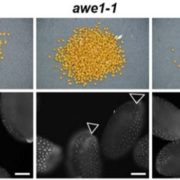
Suberin and Seed Dormancy
Environmental signals during seed production are important determinants of seed properties, including seed dormancy and seed longevity. The mother plant plays an important role in this signaling process, collecting signals throughout her life history and modulating dormancy by providing hormones to maturing…
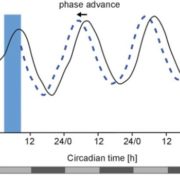
Blue Light Photoreception by Chlamydomonas
Cryptochromes are flavin-binding proteins that act as blue light receptors in bacteria, fungi, plants and insects and are components of the circadian oscillator in mammals. Animal and plant cryptochromes are evolutionarily divergent, although the unicellular alga Chlamydomonas reinhardtii has both an…

A Controller of Leaf Angle in Soybean
Soybean (Glycine max) is one of the most important oilseed crops that provides edible oil for humans and is a major renewable feedstock for biodiesel production around the world. As such, increasing soybean yield potential has become a long-term breeding objective. Soybean leaf petiole angle is an important…
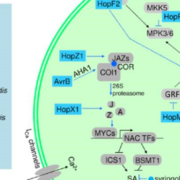
Update: Stomatal defense a decade later
Stomatal defense, recognition of pathogens at the stomatal pore accompanied by stomatal closure to prevent their entry, was discovered ten years ago. Melotto et al. review what we’ve learned in the past decade about this key defense strategy. They discuss pathogen recognition, in which microbe-associated…

Insights into Salicylic Acid and Mitochondria
Within the mitochondrial electron transport chain, complex II (succinate dehydrogenase [SDH]) oxidizes succinate to fumarate by transferring electrons to ubiquinone (UQ), which is reduced to ubiquinol. The enzyme is formed by four subunits: a flavoprotein (SDH1), which contains the FAD cofactor, an iron…
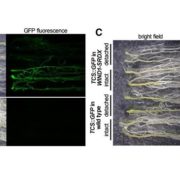
The Root Greening Response in Arabidopsis
Based on various developmental, environmental, and hormonal cues, proplastids can be converted into different types of plastids within cells. In Arabidopsis, chloroplast development is repressed in roots via auxin signaling. When roots are detached from the shoot, and its supply of auxin, roots develop…

Monitoring the Dynamics of Freezing in Trees
Ice formation within plants influences their physiology mechanically, hydraulically, and at a cellular level. Mechanical strain occurs as water expands during freezing and tension is induced in the remaining liquid-phase sap. Xylem cavitation is initiated upon freezing due to the low (i.e. negative)…
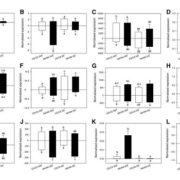
Drought-Responsive Novel MicroRNAs in Grapevine
European grapevines (Vitis vinifera) are routinely grafted on interspecific hybrid rootstocks mainly to control infestation by phylloxera (Daktulosphaira vitifoliae). Research has shown, however, that these rootstocks can also affect scion growth vigor and resistance to abiotic stresses such as drought.…

